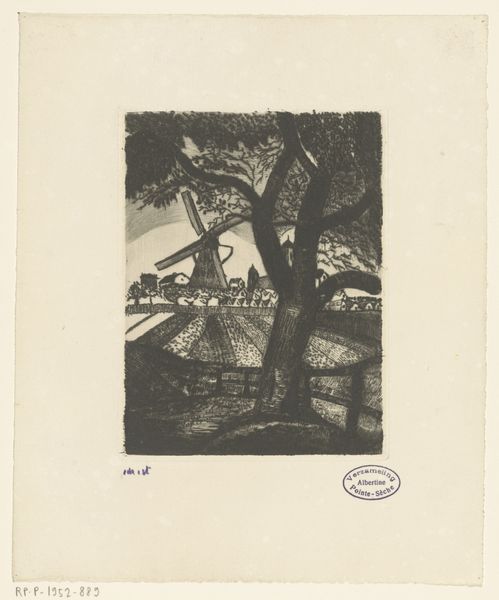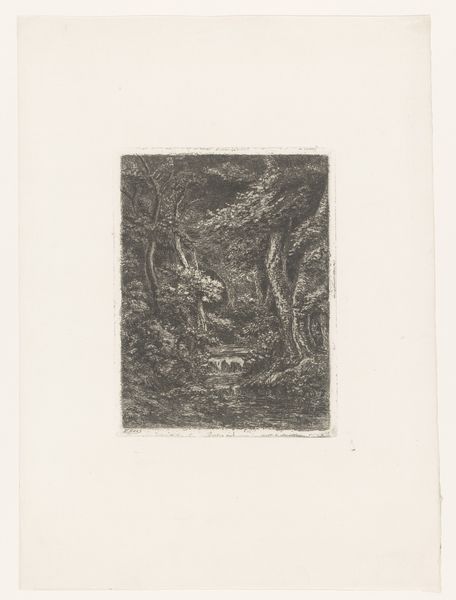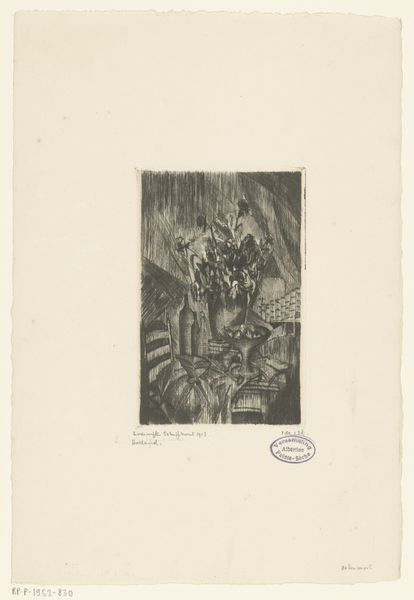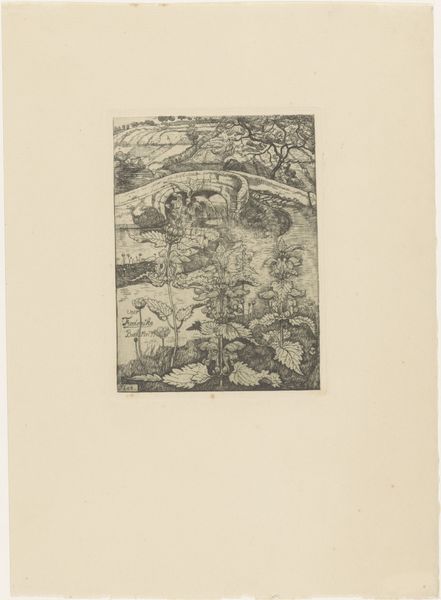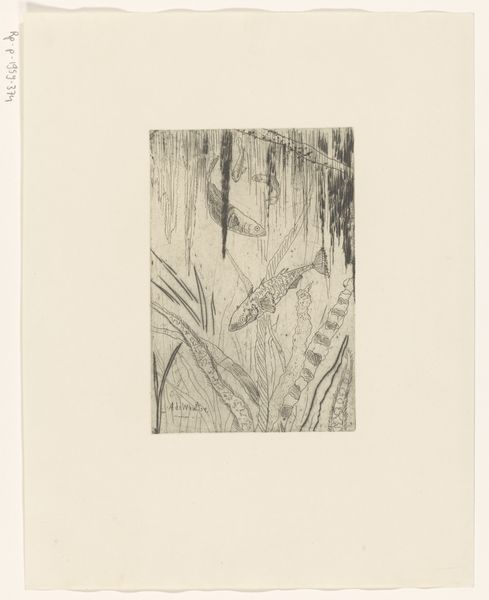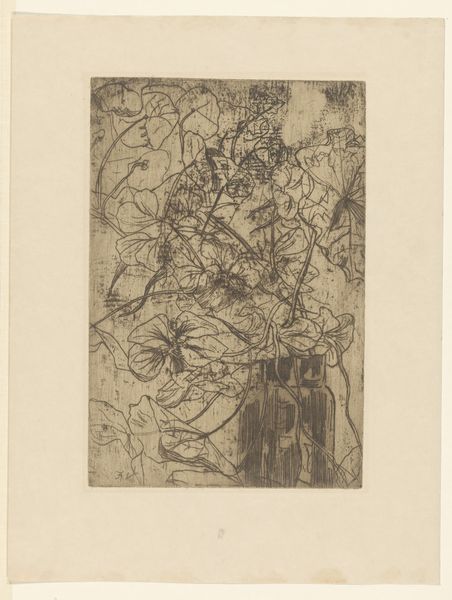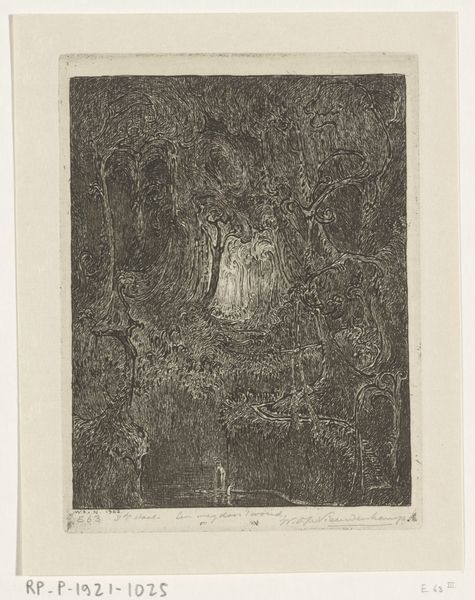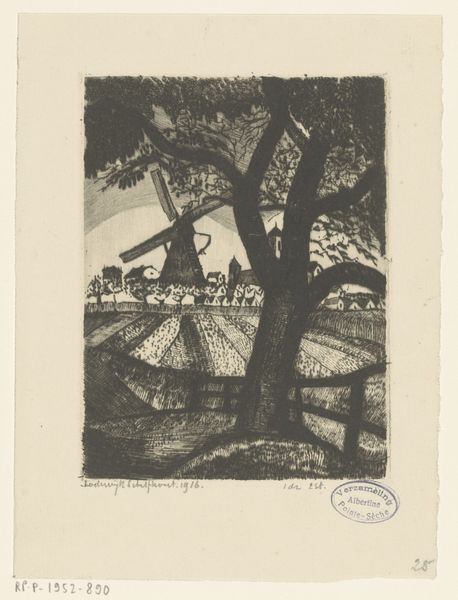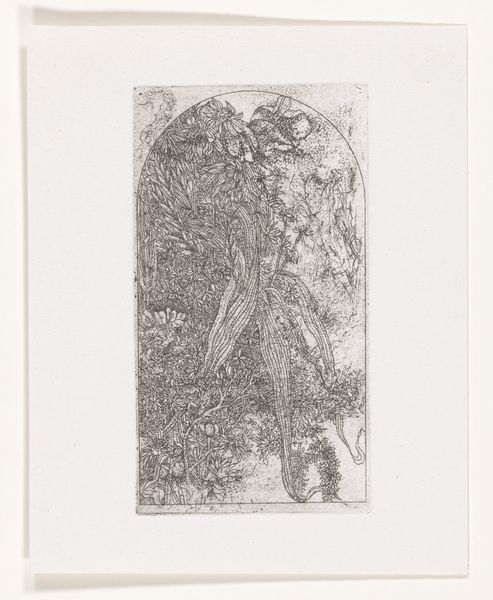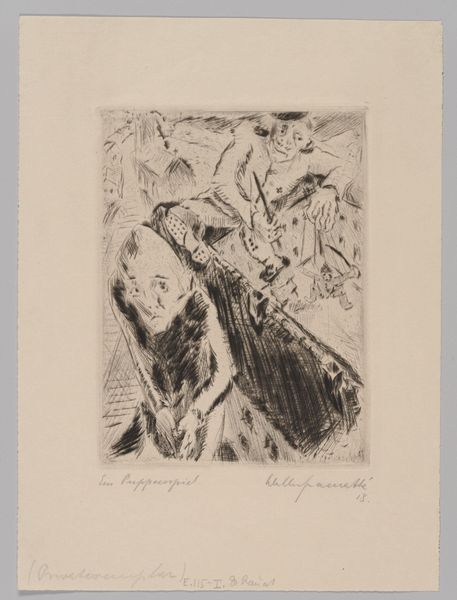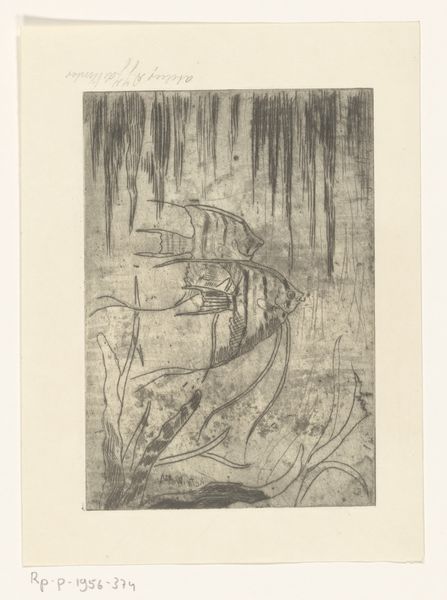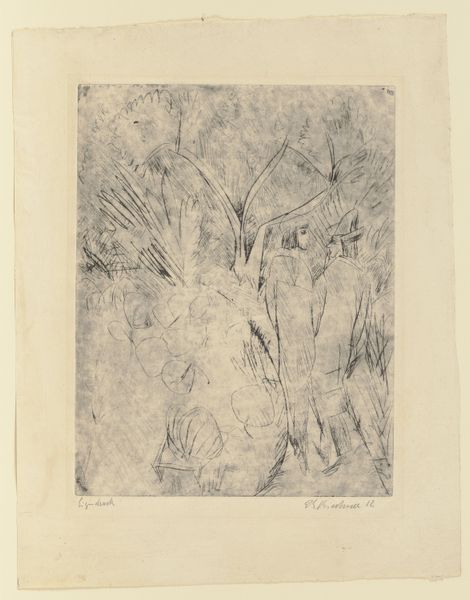
print, woodcut
#
tree
# print
#
landscape
#
woodcut
Dimensions: height 162 mm, width 122 mm
Copyright: Rijks Museum: Open Domain
Editor: This is "Heuvellandschap met nederzetting," or "Hilly Landscape with Settlement" by Lodewijk Schelfhout, a woodcut print from 1916. I am struck by how raw and almost aggressively textured it is, given the print medium. What stands out to you in this piece? Curator: It's that roughness that’s key, isn't it? A woodcut involves the deliberate removal of material, a carving away to create the image. Consider the labour involved: each line a conscious decision, a physical act of destruction and creation. This wasn't about mimicking reality, but about actively *making* an image from a block of wood. How do you think the choice of a woodcut, versus, say, etching, influences our understanding of this landscape? Editor: I hadn't really thought about the labor aspect so directly. I guess etching would offer finer details. The woodcut gives it a very direct, almost folk-art feel despite the formal composition. Curator: Precisely. Schelfhout is drawing our attention to the means of production. The material itself, wood, grounds us to the physical world. Even the title—landscape with settlement—focuses our attention on material culture. Think about the context of 1916 – a world at war. Could this landscape be an assertion of place, of the tangible against the abstract horrors of war? Is he representing the working man and his rooted life within a chaotic Europe? Editor: That connection to the social context is so insightful. I was initially just focused on the aesthetic qualities of the work, but thinking about the labor and the timing of its creation opens up a whole new way of looking at it. Thank you for sharing this with me. Curator: And thank you for highlighting the print's visceral texture—it's through this materiality that we connect with both the artist's labour and the world he was trying to represent.
Comments
No comments
Be the first to comment and join the conversation on the ultimate creative platform.

